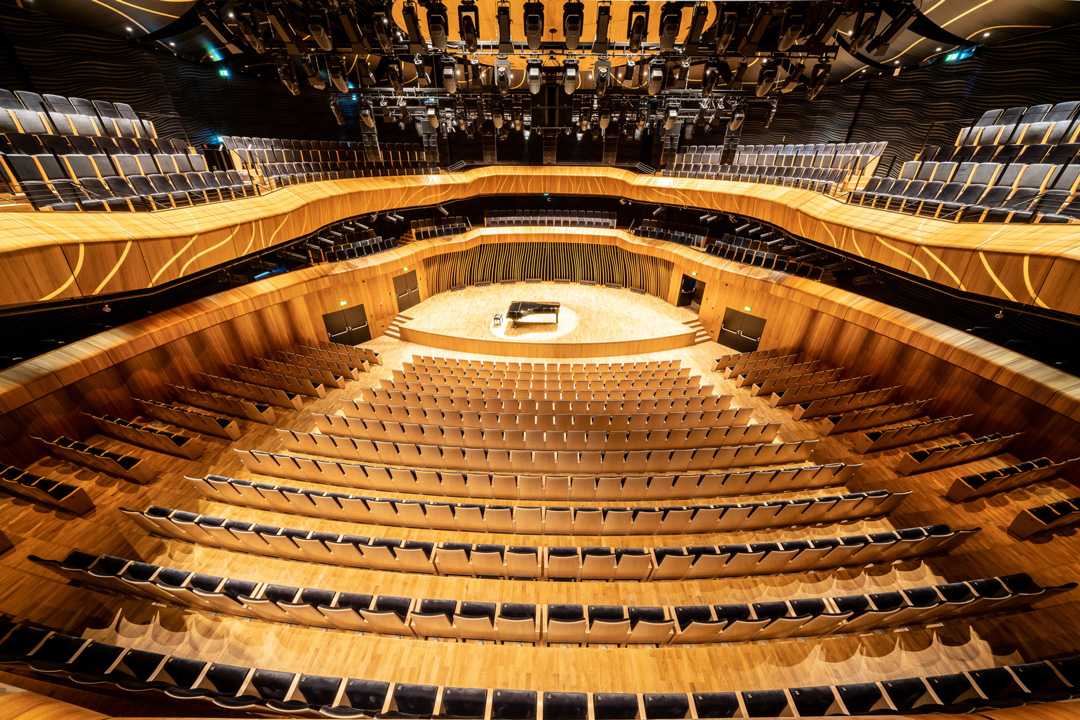Poland’s Cavatina Hall opens with Optocore
- Details

This multi-functional building, combining office and cultural spaces, is set over six storeys on more than 9,000sq.m and includes a recording studio as well as a 1,000-seat concert hall.
Its AV infrastructure is woven into a sophisticated digital/analogue network, designed around an Optocore backbone, feeding a multiplicity of signals to an L-Acoustics L-ISA Immersive Hyperreal sound system from a pair of roving DiGiCo Quantum 338 consoles, operating from four different locations.
These were specified and delivered by system integrators Audio Plus, along with the latest stage mechanics and AV technologies, including sound and light tracking, variable acoustics and visual information systems.
Warsaw-based Audio Plus were heavily involved from the outset. One of the key aims was the successful distribution of signals between the FOH stations to the stage, the recording studio and third party OB vans. This has been carried out using integrated high-performance Optocore digital network devices and third-party converters, which can handle up to 1,856 digital signals.
While the analogue signals delivered to the consoles are have already passed through a 96-channel analogue splitter, deployment of the Optocore devices enables a further 96 analogue signals to be processed via more than 40 connection boxes. This creates maximum versatility, enabling a myriad of different signals to be transported to any destination, including the many different platforms to OB vans for broadcast and recording.
Audio Plus contract manager / engineer Tomasz Ibrom explained that it had been the intention to specify Optocore to help achieve such a nimble and agile solution. “We have never experienced any problems with Optocore devices,” he said. “They do exactly what they are designed to do, and this is what we expect from devices in professional audio. Also the technical and sales support we receive is always of the highest level. It was a natural choice, particularly once we had selected DiGiCo desks.”
He highlighted the obvious advantages of a fibre solution, including retention of signal integrity over distance, the security of redundancy, low latency and channel capacity. “And on top of that,” continued Tomasz, “fibre is free of electromagnetic interferences, and enables us to transmit all type of data.”
His design is based around Optocore M8-OPT and M12-OPT MADI switches - the former converting the Optocore loop to MADI and the latter used as a stand-alone MADI matrix in the fifth floor amplification room. In addition, six X6R-FX-16MI and a X6R-FX-16LO take feeds from the consoles, enabling the desk to handle 96 mic input channels.
The Audio Plus engineer adds, “With flexibility the key to the project, all the digital and analogue connections are terminated on patch panels in the amplification room - optic, concentric, CAT6, and analogue.” The destination boxes are located not only on stage but also in booths, auditorium, hanging bats, foyer, patio, recording studio, backstage and the garage for the broadcast vehicles.
“Signals can be connected in many different ways,” he continues. “Of course, not all possible channels are in use at the same time, but using the system (after reconfiguration) we can for example, split analogue signals for broadcast or the recording studio and connect any digital desk that exists on the market, using Dante, AES50, MADI, Optocore, AVB.”
















